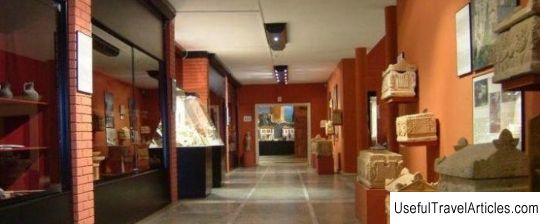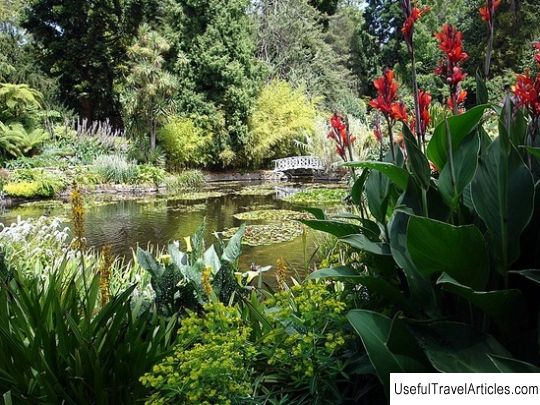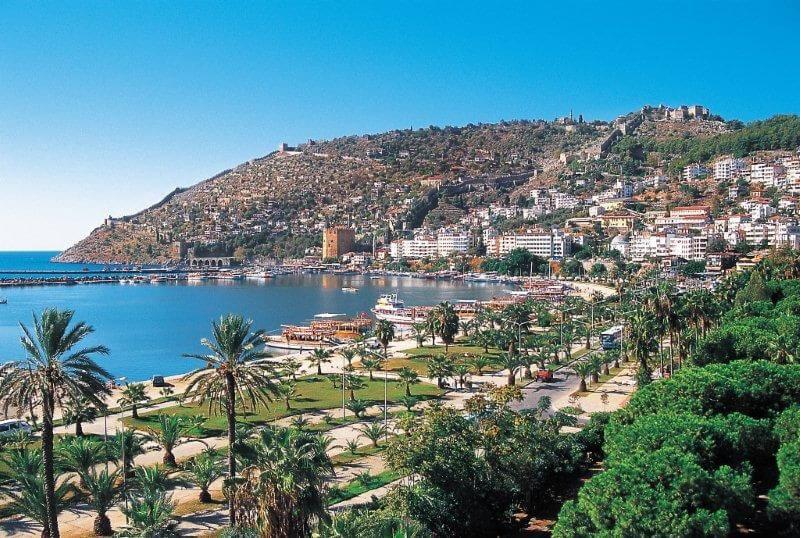Archaeological Museum (Alanya arkeoloji muzesi) description and photos - Turkey: Alanya
Rating: 8,1/10 (3021 votes) 
Archaeological Museum (Alanya arkeoloji muzesi) description and photos - Turkey: Alanya. Detailed information about the attraction. Description, photographs and a map showing the nearest significant objects. The name in English is Alanya arkeoloji muzesi. Photo and descriptionThe Turkish city of Alanya has a rich history, and this is confirmed by the exposition of the City Museum. The museum was built in 1967, but & nbsp; the number of exhibits in it regularly increases, and the collection of artifacts is constantly updated. Excavations are constantly underway on the territory of the Turkish state, so a large number of exhibits are waiting for their turn to get into the permanent exhibition. Museum staff often travel to historical sites to assess finds. Quite often, museum specialists collaborate with foreign archaeologists for a more thorough analysis of priceless and historically significant things. The museum building has an unusual structure and consists of one external and fourteen internal exhibition halls. The exposition of the museum is a collection of artifacts from such historical periods as Phrygian, Lydian, Greek and Byzantine. At the entrance to the museum, in huge showcases, architectural monuments of the Bronze Age, such states as Phrygia, Urartu, Lydia, Ancient Rome, Ancient Greece and Byzantium, are displayed. In the large hall of the museum, Byzantine and ancient Roman products made of baked clay, glass, bronze and marble, writing in the language of the Karamanid principality, mosaics of the 7-5 centuries BC are exhibited. The archeological hall contains the oldest exhibit of the Archaeological Museum - a stone with an inscription in the Phoenician language dating back to 625 BC. No less historically valuable finds of the Alanya Museum are a gravestone stele made in the first century BC and fragments of ancient inscriptions. The most valuable exhibit of the Archaeological Museum is the statue of Hercules, the hero of ancient myths and legends, well known to this day. It was cast in bronze in the second century BC. and today is in a separate room. The 51.5 cm high sculpture was discovered in 1967 in the mountainous town of Asartepe, which is located northeast of Alanya. Historians believe that the monument was brought here by pirates who ruled in the mountainous Cilicia, as a trophy from a ship they robbed or from some area. The sculpture amazes with the high skill of the author who made it. The muscles of the body are made very realistically, the hair and beard of a man are believably depicted, his face has such a vivid expression that it surprises even a sophisticated viewer. Looking at the sculpture of Hercules, one can feel his fatigue from the accomplished feats and satisfaction from the next victory, feel his extraordinary strength. The highlight of the Alanya Archaeological Museum is an extensive exposition of the so-called vessels for ash. These finds belong to the Byzantine and Roman periods, they are made in the form of a sarcophagus, and their lids are shaped like a saddle. On the wide walls of the vessels are various drawings, floral garlands, figures of a horseman, in some places between the patterns one can see images of male and female faces, and on some vessels there are even ancient Greek inscriptions. The vessels are placed both in the museum building and in the garden. They are made of limestone, abundant in Alanya, and are associated with the custom of burial that existed here in ancient times. It is very difficult to excavate the earth in the rocky rocks of this area, therefore, the local residents burned the body of the deceased, and his ashes were placed in special vessels. The burning of the deceased was evidence of respect for him, moreover, this rite guaranteed immortality not only to the deceased, but also to all his loved ones. Among the exhibits of the museum there is a large collection of coins that are artifacts of the Ancient Greek period, Byzantine, Roman, Ottoman and Seljuk empires; there are also coins from the time of the proclamation of the Republic of Turkey. The museum displays an interesting collection of weapons from the Ottoman era (bow, rifles, arrows, swords). One of the sights of the museum is the handwritten text of the Holy Quran. The second half of the museum is dedicated to the ethnographic artifacts of the Ottoman and Seljuk epochs, it is interesting to see a part of the old house of those times, recreated from the results of excavations in Alanya and its surroundings. Archaeologists had to disassemble the building into separate parts in order to bring it to the museum and assemble it on the territory of the museum in accordance with the drawings. It is impossible to place all the exhibits in the museum building, so some of them are exhibited in the garden. It displays antique clothes, nomad carpets, ancient weapons, jewelry, original embroidery and many other examples of local culture collected at different times in the region. A collection of stone products from the Byzantine, Roman and Islamic periods has been collected. Here you can also appreciate the excellent examples of the local art of woodcarving, admire the hand-made carpets that used to decorate the dwellings of the Turks. In the courtyard of the museum, a grape press and other agricultural machinery have been recreated.     We also recommend reading Palace Velden (Schloss Velden) description and photos - Austria: Velden Topic: Archaeological Museum (Alanya arkeoloji muzesi) description and photos - Turkey: Alanya. |




